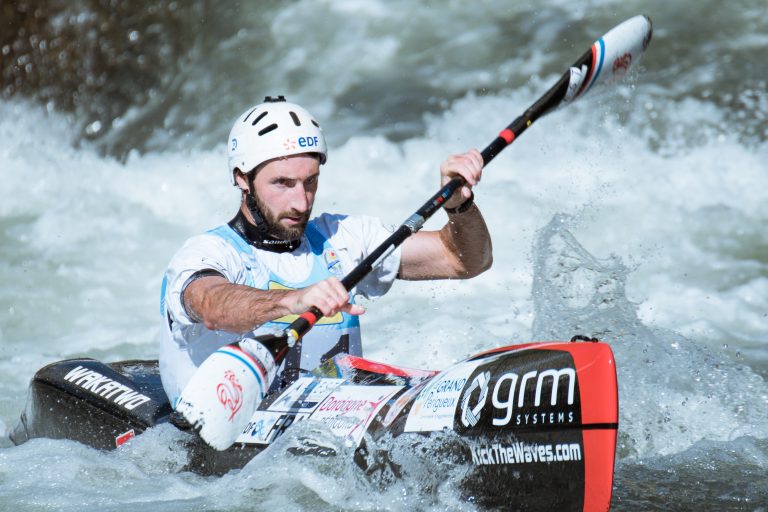General Rules of Rafting
When it comes to rafting, safety should be your top priority. From steering through rapids to working as a team, there are essential rules that can make or break your adventure. But what happens when you encounter unforeseen challenges on the water? Stay tuned to discover how to handle capsizing, communicate effectively, and guarantee everyone's well-being in the great outdoors.
Proper Gear and Equipment
Have you ever wondered what essential gear and equipment you need to guarantee a safe and enjoyable rafting experience? Proper attire is vital when starting on a rafting adventure. You must wear quick-drying clothes, such as rash guards or synthetic shirts, to keep you comfortable throughout the trip. Additionally, don't forget to bring a hat with a secure strap to shield you from the sun and keep your head protected. Proper footwear is also important; opt for sturdy water shoes or sandals with straps to make sure they stay on your feet even in turbulent waters.
When it comes to essential gear, a well-fitted personal flotation device (PFD) is non-negotiable. Your PFD should be snug but comfortable, allowing you to move freely while providing the necessary buoyancy to keep you safe. A helmet is another critical piece of equipment, especially for tackling challenging rapids. Make sure your helmet fits securely and has adequate padding to protect your head from potential impacts.
Additionally, it's a good idea to have a sturdy and reliable paddle suited to your height and strength. Your paddle is your powerhouse on the river, so choose one that feels comfortable and offers good control. Remember, having the right gear not only enhances your safety but also ensures you can fully enjoy the thrill of rafting without any worries.
Safety Briefing and Instructions
Before starting on your rafting adventure, it's essential to grasp the ins and outs of safety essentials. Knowing how to utilize your safety gear effectively and being aware of emergency procedures can make all the difference. Stay tuned as we break down the key points to guarantee a safe and thrilling rafting experience!
Safety Gear Overview
Make sure you are equipped with the essential safety gear before starting on your rafting adventure. Ensuring your safety equipment is in top condition and fits comfortably is important for a successful and secure experience. Here are some key items to think about:
- Helmet: Protect your head from potential impacts.
- Life Jacket: Stay afloat in case of unexpected immersion.
- Paddle: Navigate through the waters with control.
- Wetsuit and Water Shoes: Keep yourself warm and protected.
- Whistle: Use as a signaling device in emergencies.
Each piece plays an important role in keeping you safe and enhancing your comfort during the thrilling journey down the river.
Emergency Procedures Reminder
Strap on your helmet and guarantee it fits securely as we now shift our focus to the critical Emergency Procedures Reminder for your upcoming rafting adventure. Before setting off on the thrilling rapids, make sure you are equipped with essential knowledge to handle any unexpected situations. Take a moment to review the table below, outlining key first aid procedures and risk assessment strategies to keep you and your fellow adventurers safe on the water.
| Emergency Procedure | Action Required |
|---|---|
| First Aid | Attend to injuries promptly |
| Risk Assessment | Evaluate changing conditions |
Team Communication and Coordination
To navigate the rapids successfully, seamless team communication and coordination are essential components that can make or break your rafting experience. When you're out on the water, every member of your team needs to work together cohesively to conquer the challenges the river presents. Here are some key tips to enhance your team communication and coordination:
- Trust Fall: Building trust within your team is critical for effective communication. Trusting your teammates guarantees open communication and better coordination.
- Clear Signals: Establishing clear hand signals or verbal cues before hitting the rapids helps in conveying messages effectively amidst the roaring waters.
- Leadership Rotation: Rotate leadership roles within the team to give everyone a chance to lead and make sure that communication flows smoothly between all members.
- Active Listening: Communication is a two-way street. Encourage active listening within your team to make certain that everyone's ideas and concerns are heard and addressed.
- Debrief Sessions: After each rafting session, hold debrief sessions to discuss what went well, what could be improved, and how communication and coordination can be enhanced for the next adventure.
Understanding River Signals
Now, let's talk about the critical aspect of river signals. Knowing these signals can mean the difference between a smooth rafting experience and a dangerous situation. It's vital to understand the meanings and safety precautions associated with each signal to guarantee a safe and enjoyable adventure on the water.
Signal Meanings
Understanding river signals is crucial for safe and successful rafting adventures. As you navigate the waters, clear communication signals are key for a seamless experience. Here are some safety guidelines to help you decipher the message the river is sending you:
- Hand Signals: Learn the basic hand signals used for communication.
- Whistle Blows: Different whistle patterns convey specific messages.
- Visual Cues: Pay attention to visual cues from your guide or other rafters.
- Verbal Commands: Understand the importance of clear verbal commands.
- Emergency Signals: Be aware of emergency signals and how to respond swiftly.
Mastering these signal meanings will enhance your rafting journey and keep you safe on the river.
Safety Precautions
Traversing the river safely begins with a thorough understanding of the essential safety precautions, particularly in interpreting river signals. When piloting the waters, being aware of river hazards and knowing how to prevent accidents is critical. Equally important is the proper use of personal flotation devices to guarantee your safety in case of unexpected events. Below is a table summarizing key safety precautions to keep in mind while rafting:
| Safety Precautions | Importance |
|---|---|
| Understand river signals | Crucial for communication |
| Wear a life jacket | Essential for safety |
| Stay hydrated | Prevent dehydration |
| Avoid standing in the raft | Maintain stability |
| Know emergency procedures | Be prepared |
Paddling Techniques and Strokes
Mastering the art of paddling techniques and strokes is essential for maneuvering the thrilling waters while rafting. To navigate the rapids with finesse, you must hone your skills and understand the dynamics of the river. Here are some key points to keep in mind:
- Paddle Techniques: Learning the proper way to paddle, including feathering your blade, using a high brace, and executing effective forward and backward strokes, will help you control your raft with precision.
- River Currents: Understanding how river currents work and how they can affect your rafting experience is vital. Knowing how to read the water will guide you in choosing the best route and paddling strategy.
- Stroke Efficiency: Mastering efficient paddling techniques will not only conserve your energy but also allow you to respond quickly to changes in the river's flow and direction.
- Water Obstacles: Being able to navigate around rocks, waves, and other obstacles in the water requires a combination of skill and agility. Knowing when to paddle hard and when to hold back is key to a successful run.
- Practice, Practice, Practice: The more you practice your paddling techniques and strokes, the more confident and competent you will become on the river. Embrace the challenge, stay focused, and never stop learning and improving your skills.
With dedication and perseverance, you can elevate your rafting experience to new heights by mastering these essential paddling techniques and strokes.
Dealing With Capsizing
When faced with the unexpected challenge of capsizing while rafting, your quick reactions and knowledge of proper safety protocols can make all the difference in swiftly regaining control and ensuring everyone's well-being on the water. Capsizing is a reality of rafting, but it doesn't have to be a catastrophe. The key is to stay calm and act swiftly. The moment you find yourself in the water, remember your training. Stay together as a group, and if possible, hold on to the raft or any nearby safety line. This will make it easier for a water rescue if needed.
Survival techniques are essential in this situation. Always wear your personal flotation device (PFD) and helmet, as they are your first line of defense. If you are separated from the raft, float on your back with your feet downstream, using a defensive swim position to protect yourself from obstacles. Try to keep your head above water and scan for potential hazards.
In the event of a capsize, prioritize the safety of everyone in your group. Perform a headcount to verify everyone is present. If someone is missing, initiate a water rescue immediately. Remember, staying alert and knowing survival techniques can turn a potentially dangerous situation into a story of resilience and triumph on the water.
Environmental Awareness and LNT Principles
Embracing environmental awareness and Leave No Trace (LNT) principles is essential for fostering sustainable and respectful practices while enjoying the beauty of nature through rafting.
- Leave No Trace: Always remember to leave the environment as pristine as you found it by packing out all waste and garbage.
- Conservation Efforts: Support local conservation initiatives and organizations working to protect the rivers and surrounding ecosystems.
- Environmental Impact: Be mindful of the guarantee your rafting activities may have on the environment and take steps to minimize it.
- Sustainable Practices: Opt for eco-friendly rafting companies that prioritize sustainability in their operations.
- Respect Nature: Treat the natural world with reverence and care, understanding that we are merely guests in the home of wildlife and plant life.
Rafting is not just about the thrill of the rapids; it's also about appreciating the interconnectedness of all living things and the delicate balance of ecosystems. By following LNT principles and embracing environmental awareness, you not only assure that future generations can enjoy the same pristine rivers and landscapes but also contribute to the broader movement of conservation. Let the beauty of nature inspire you to protect it, and let every stroke of your paddle be a declaration of love and respect for our planet.
Emergency Preparedness and Rescue Skills
To guarantee your safety and that of your fellow rafters, possessing essential emergency preparedness and rescue skills is paramount while traversing rivers and rapids. Swiftwater rescue techniques are essential in the event of a raft overturning or a rafter falling overboard. Being prepared to handle such situations can make a significant difference in the outcome of an emergency.
River navigation is not just about enjoying the thrill of the ride; it also involves understanding how to read the water and anticipate potential hazards. Knowing how to maneuver the raft effectively through different currents and obstacles can prevent accidents and keep everyone safe. Additionally, being able to identify safe spots for rescue operations is parammount in case someone needs assistance.
Incorporating swiftwater rescue training into your rafting adventures is a responsible choice that can save lives. Learning how to perform basic rescue techniques, such as throwing a rescue rope or executing a T-rescue, can make you a valuable asset in emergency situations. By equipping yourself with these skills, you contribute to creating a safer environment for everyone on the river.
Frequently Asked Questions
How Do I Choose the Right Type of Raft for My Skill Level and the River's Difficulty?
When picking a raft, match your skills to the river's challenge. Consider the raft's size, stability, and maneuverability. Make sure you have proper rafting gear and follow safety precautions. Enjoy the thrill safely!
What Should I Do if I Encounter Wildlife While Rafting?
If you encounter wildlife while rafting, stay calm and avoid sudden movements. Maintain a safe distance and never feed or approach them. Remember, it's their territory, and respecting their space guarantees your safety and theirs.
Are There Any Specific Rules or Etiquette I Should Follow When Rafting in a Group With Other People?
When rafting in a group, it is crucial to be mindful of rafting etiquette and group dynamics. Respect others' space, communicate openly, and work together as a team. Embrace the flow of the river and the camaraderie of your fellow rafters.
How Can I Prevent Sunburn and Dehydration While on a Rafting Trip?
To keep hydrated and shielded from the sun while rafting, quench your thirst often with water or electrolyte drinks. Wear a wide-brimmed hat, sunglasses, and apply sunscreen liberally. Stay refreshed and protected for an enjoyable journey.
What Should I Do if I Have a Medical Emergency While on the River?
If you have a medical emergency on the river, stay calm and assess the situation. Administer first aid if needed, and follow emergency protocol. Your quick actions can make a significant difference in the outcome.






